PRESENTATION: Nari Ward -Gilded Darkness
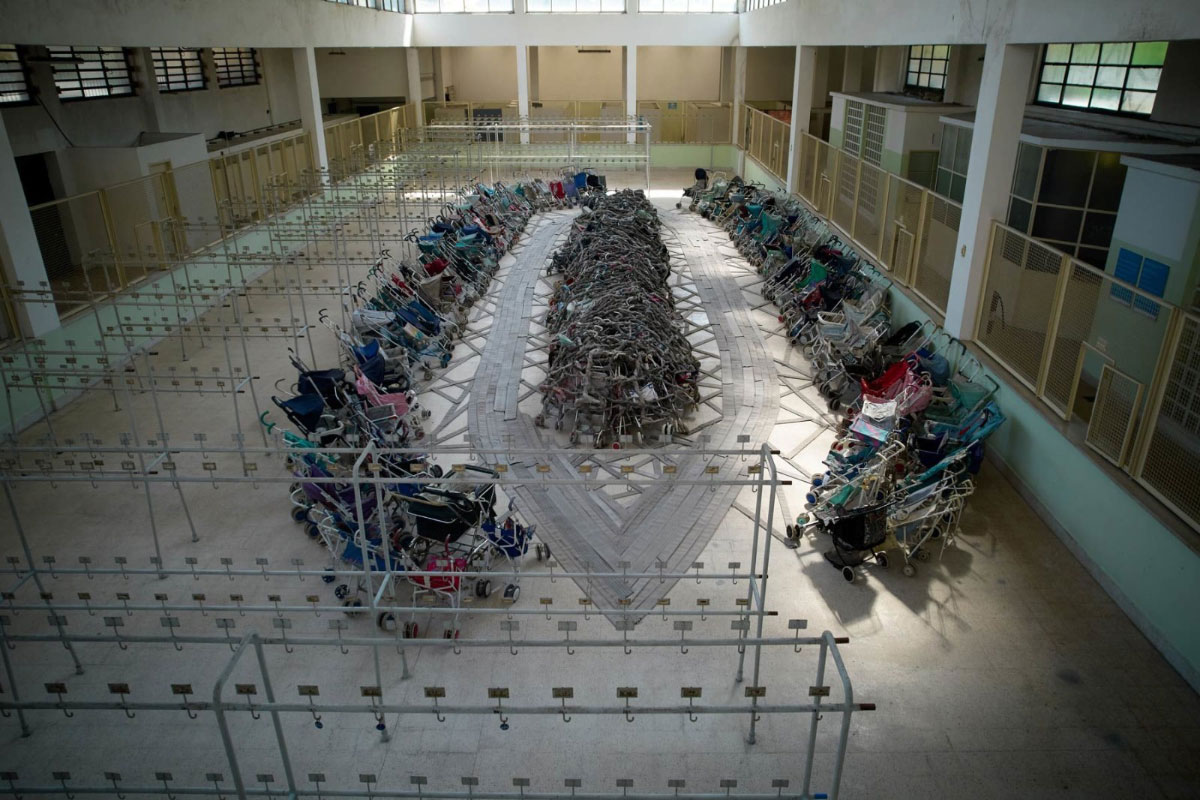 Nari Ward is known for his sculptural installations composed of discarded material found and collected throughout his neighborhood. He has repurposed objects such as baby strollers, shopping carts, bottles, doors, television sets, cash registers, and shoelaces, among other materials. Ward re-contextualizes these found objects in thought-provoking juxtapositions that create complex, metaphorical meanings to confront social and political realities surrounding race, migration, democracy and community, intentionally leaving the meaning of his work open to allow his viewers to provide their own interpretations.
Nari Ward is known for his sculptural installations composed of discarded material found and collected throughout his neighborhood. He has repurposed objects such as baby strollers, shopping carts, bottles, doors, television sets, cash registers, and shoelaces, among other materials. Ward re-contextualizes these found objects in thought-provoking juxtapositions that create complex, metaphorical meanings to confront social and political realities surrounding race, migration, democracy and community, intentionally leaving the meaning of his work open to allow his viewers to provide their own interpretations.
By Dimitris Lempesis
Photo: Fondazione Nicola Trussardi Archive
Staged in the exterior and interior spaces of the Centro Balneare Romano, in the Città Studi neighborhood, the exhibition “Gilded Darkness” by Nari Ward features new works created specifically for the occasion, alongside some of his most renowned installations and environmental interventions. Of Jamaican descent, Ward moved to New York with his family at a young age, and after studying art at Hunter College and Brooklyn College, he settled in Harlem, the largely African American neighborhood of Manhattan. Struck by the proliferation of abandoned objects on the streets of Harlem, Ward began collecting those with a strong symbolic value. His manipulation of these materials, including children’s strollers, shopping carts, umbrellas, shoelaces, as well as other items and urban waste, gave rise to monumental installations, introducing immersive, theatrical experiences that have since become a characteristic of the art of the new millennium. In his work, Ward re-contextualizes the waste materials by creating complex scenic machines that draw viewers’ attention to the scars of the objects. The pieces bring to the fore social and political issues central to our time: from racism to growing social inequality, poverty to consumer culture, and migration to social marginalization and issues of identity. The exhibition at the Centro Balneare Romano opens with one of his best-known works, Amazing Grace (1993). To create this installation the artist obsessively collected abandoned strollers found in the empty lots that at the time were one of the signals of the social and economic inequality of Harlem. The work was presented for the first time in a former fire station precisely in Harlem, which later became Ward’s exhibition space and studio. Almost four hundred strollers are arranged to recall the elongated structure of a boat and specifically, a slave ship, crossed by walkways made from numerous fire hoses, which wrap the central part of the installation to form a web. The installation is accompanied by the voice of gospel singer and African American civil rights activist Mahalia Jackson, who sings “Amazing Grace”—a song with a rich, complex history intertwined with both the abolitionist and civil rights movements, as well as the peace demonstrations of the 1960s. The soundtrack underlines the elegiac tone of the installation: the empty strollers evoke the lives of not only the children who once occupied them but also the unhoused who appropriated them to transport their belongings. The shape of the installation is reminiscent of the ships carrying enslaved men and women in chains across the Atlantic to the US and elicits other stories of migration and exile that sadly still resonate with current events, both in Italy and abroad. In the 1990s, the work was frequently read as a tribute to the victims of the AIDS pandemic, and today, its precarious appearance recalls the countless street memorials that mourn the victims of murders of African Americans by police.Installed in the rarely accessible spaces of the old locker rooms at the Romano Pool, the work is endowed with further meanings: it is not only an anti-monument, referencing recent images of strollers left at stations on the Ukrainian border to help refugees fleeing the conflict, but also embraces and envelops viewers in a melancholy, poignant atmosphere. Traces and memories of the many lives that, for decades, passed through the now-abandoned building are captured in the installation. Alongside “Amazing Grace”, Ward presents a series of works focusing on many of the themes underpinning his research. These include: the dialogue between cultures, art as a space of encounter and exchange, shaping identities at the crossroads between different languages and traditions, and, in particular, reflecting on the function of monuments at a time marked by the continual revision of history and the numerous collapses and repeated crises defining these past few years. By the old ticket office, “Stroller Sprouts” (2013), another fragile monument, which resembles a street altar, more explicitly recalls the tradition of “bottle trees”: a widespread custom in the southern United States and Caribbean, according to which evil spirits are trapped in empty glass bottles to keep them away from the living. The video self-portrait, “Sweater” (2011), reflects on the role of the artist, divided between conceptual work and physical exertion. The beads of sweat that flow like tears over the artist’s forehead allude to both fatigue and heat: concepts charged with multiple meanings, especially in the context of Caribbean and African American culture. The work inevitably references the history of slavery and countless mournings that still affect Black communities.
The exhibition continues in the outdoor spaces of the Centro Balneare Romano, occupying them with both physical and immaterial traces. Designed by architect Luigi Secchi and inaugurated in 1929, the Center preserves its imposing original architecture, which revolves around the rectangular pool of some four thousand square meters. At the heart of the exhibition is a series of new productions, commissioned by the Nicola Trussardi Foundation. In the small park that connects the old changing rooms with the swimming pool, Ward has installed a cart inspired by the street vendors of Harlem. Instead of selling ice cream or juice, Ward’s cart—entitled “Radiant Smiles” (2022). collects and sells smiles. Spectators are invited to smile inside tin cans that can then be purchased. The tins are inspired by artist Piero Manzoni’s “Merda d’artista”, who, in Milan in the 1960s, canned feces to offer one of the most caustic commentaries on emerging postwar consumer society. The most majestic and simultaneously most fragile piece is “Emergence Pool” (2022): an intervention on the swimming pool itself (which is almost as big as a soccer pitch). The pool is transformed into a sprawling golden expanse with a large, precarious raft of thousands of floating thermal blankets. “Emergence Pool” is another unstable monument commemorating the dead among the immigrants crossing the Mediterranean Sea. At the same time, it underlines the dramatic contrast between light and opacity, between gold and poor materials—a recurring element in Ward’s work (as the exhibition title reminds us). Not far away, an assemblage of white flags hoisted up by a crane evokes images of nationalism, violence, surrender, and defeat. And from the loudspeakers of “Battleground Beacon” (2021), a turret used by US police to watch over predominantly African American neighborhoods, transformed here by Ward into a musical platform, sounds and musical compositions are broadcast, created in collaboration with various groups and individuals living in Milan. These soundscapes, collected by the artist in partnership with various voluntary associations that help migrants arriving in the country, tell the story of a city rich in multiple cultures and languages. The dense fabric of sounds mixes music from Syria, voices from China, rap compositions from Algeria, hymns from Ukraine and Nigeria, Arab fairy tales, and conversations in Spanish, among many other voices. The works in the changing rooms and the installations placed in the park and alongside the Centro Balneare Romano swimming pool imagine the city as a great open-air construction site, one where monuments, values, and ideals are in a constant state of flux. In a precarious yet perfect balance, they are in a condition of constant nomadism and transformation that Ward views as fundamental to the construction of a new, global, joyfully polyphonic identity.
Photo: Nari Ward, Amazing Grace, 1993, mixed media installation, variable dimensions, Private collection, © Nari Ward, Courtesy the artist
Info: Curator: Massimiliano Gioni, Milanosport – Centro Balneare Romano, Via Ampère 20, Milan, Italy, Duration: 12/9-16/10/2022, Days & Hours: Daily 12:00-19:00, www.fondazionenicolatrussardi.com/
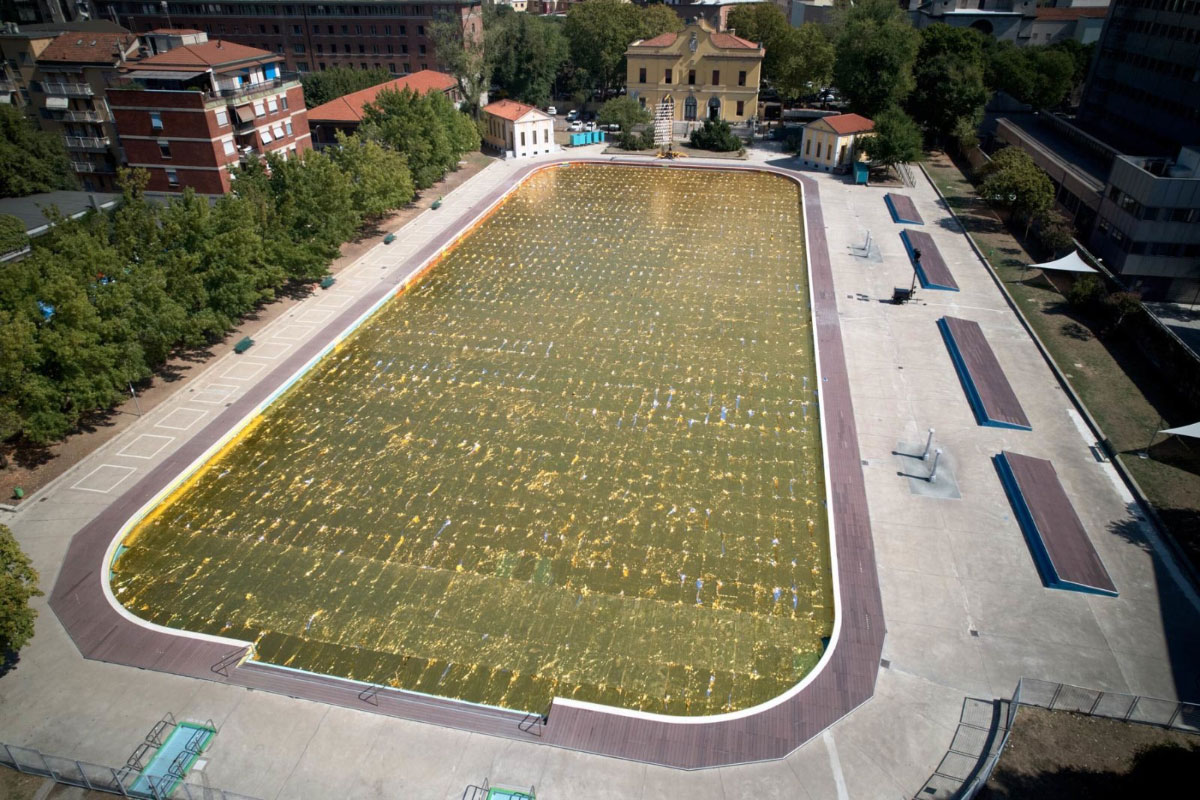
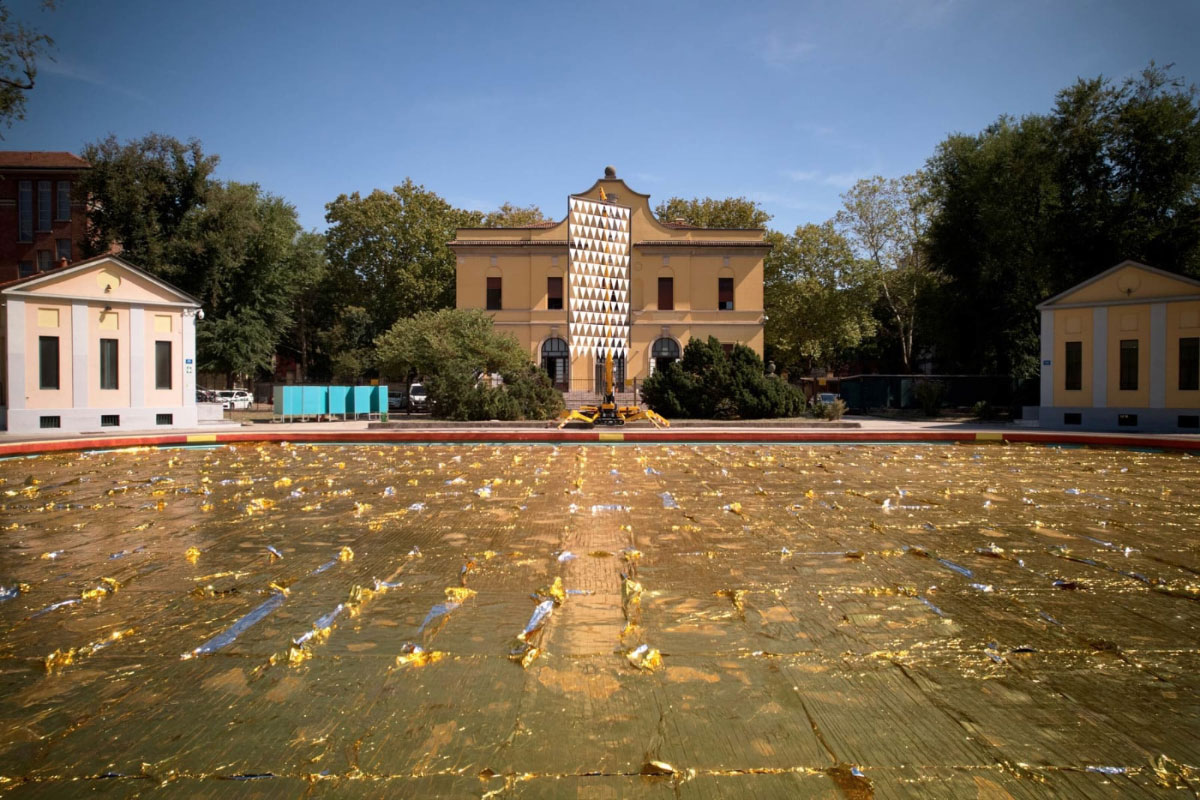
Back: Nari Ward, Backstroke Flag, 2022, iron, stainless steel, plastic flags, 700 x 300 x 10 cm, Produced by Fondazione Nicola Trussardi, © Nari Ward, Courtesy the artist and Galleria Continua
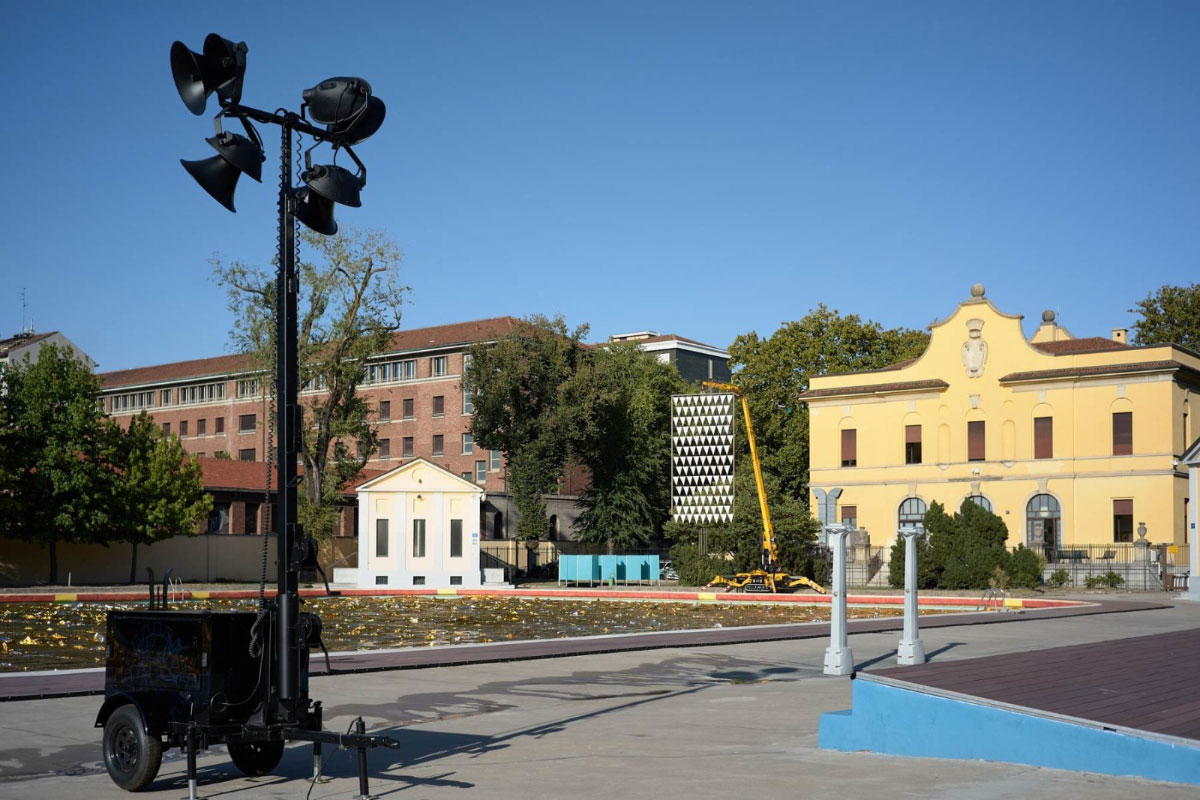
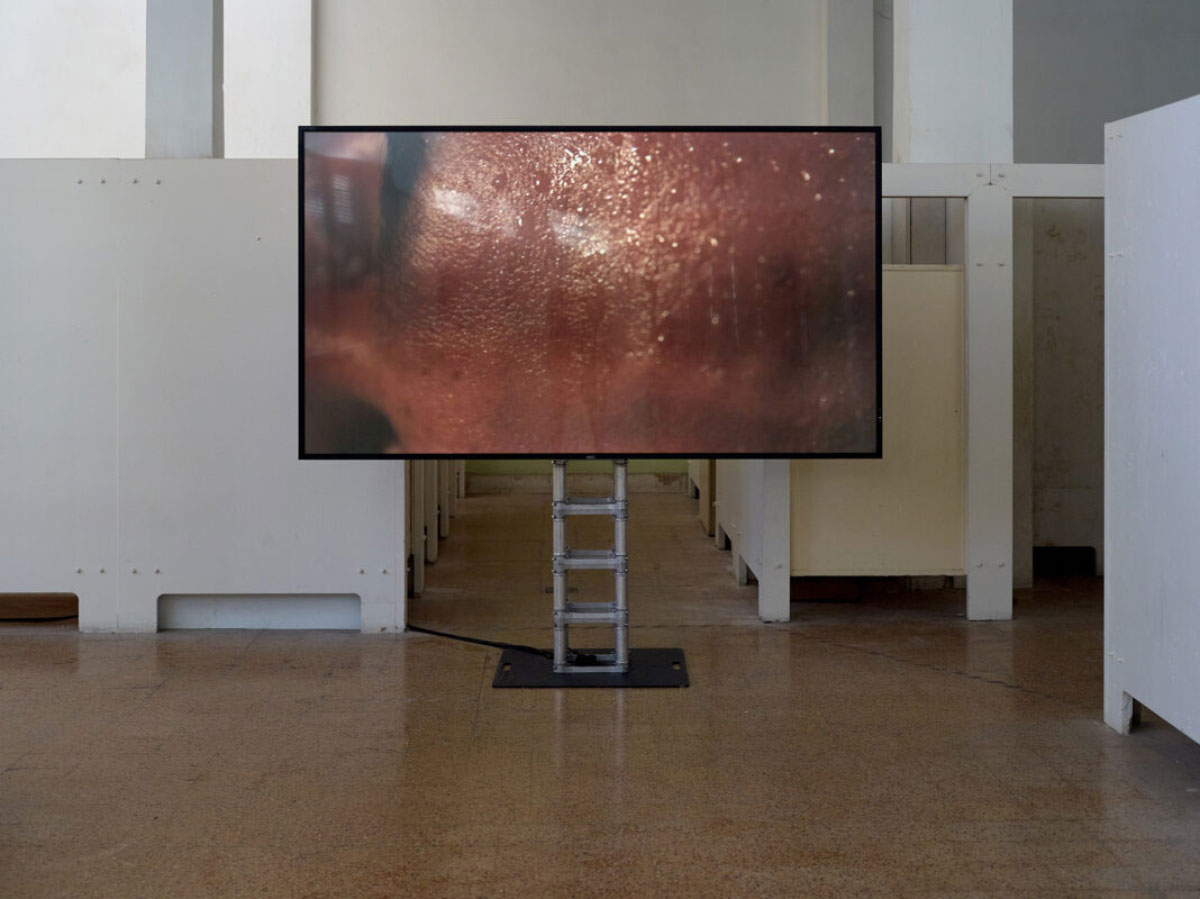
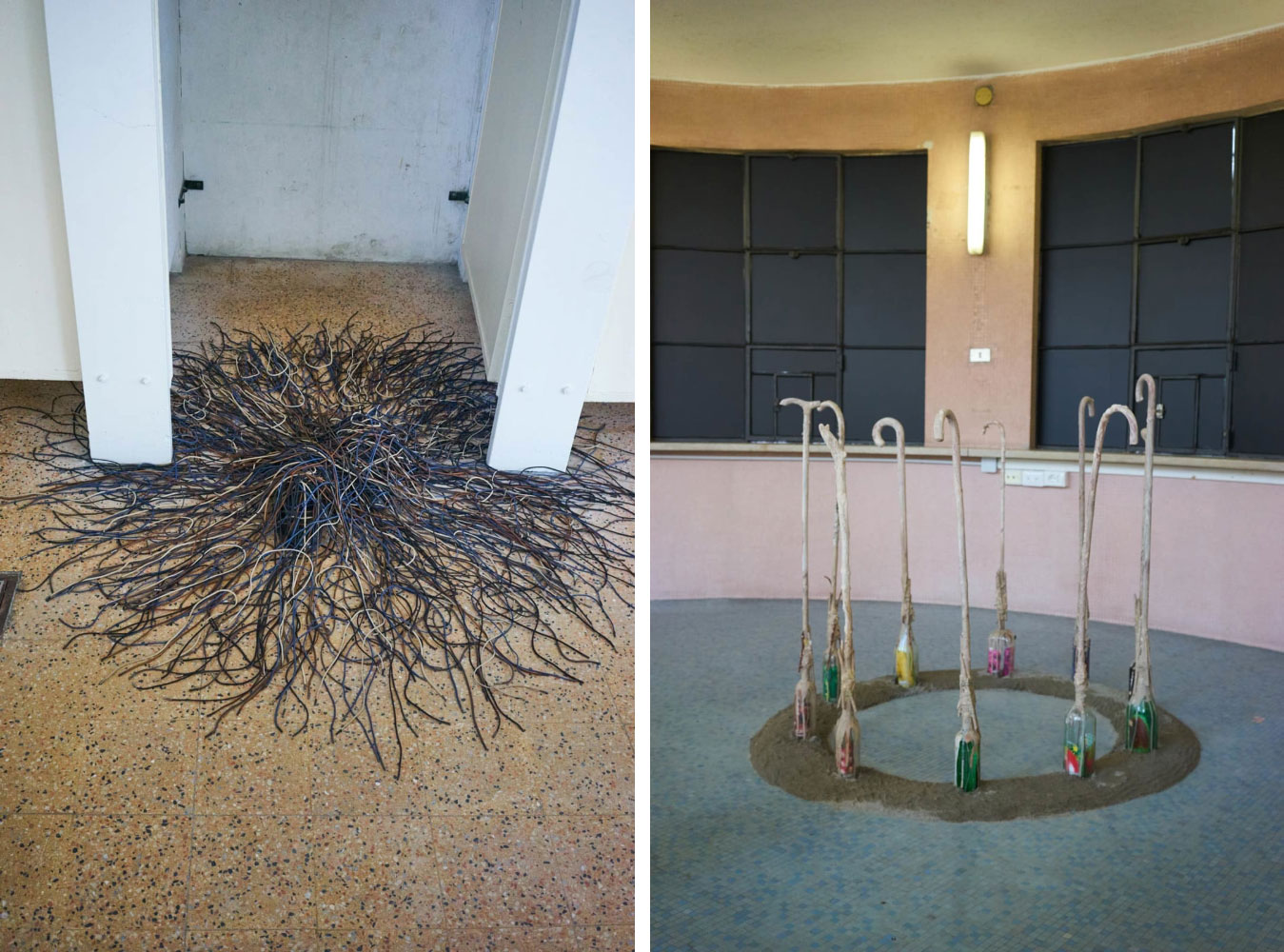
Right: Nari Ward, Stroller Sprouts, 2013, walking sticks, bamboo, clay, glue, bottles, seeds, copper wire, sand , range height 109 – 128,5 cm, © Nari Ward,Courtesy the artist and Galleria Continua
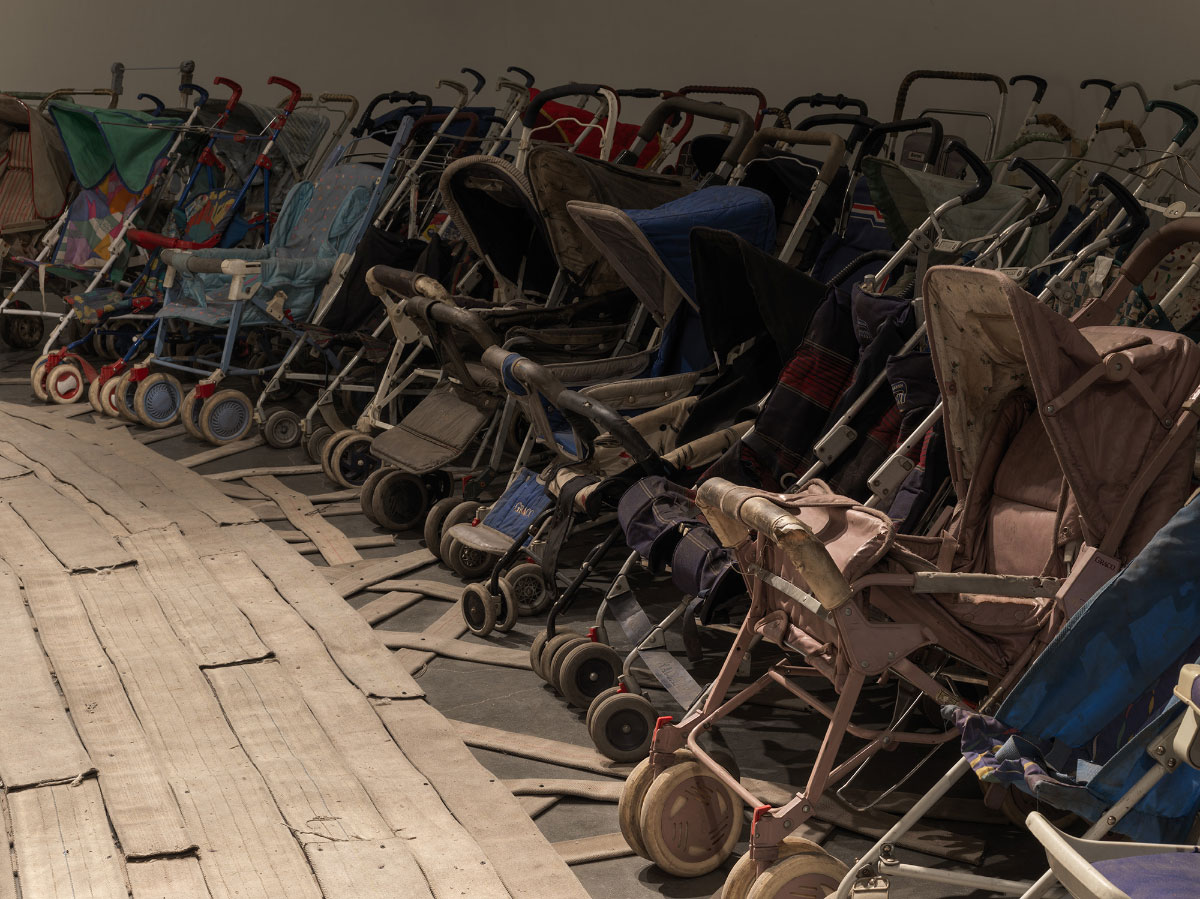
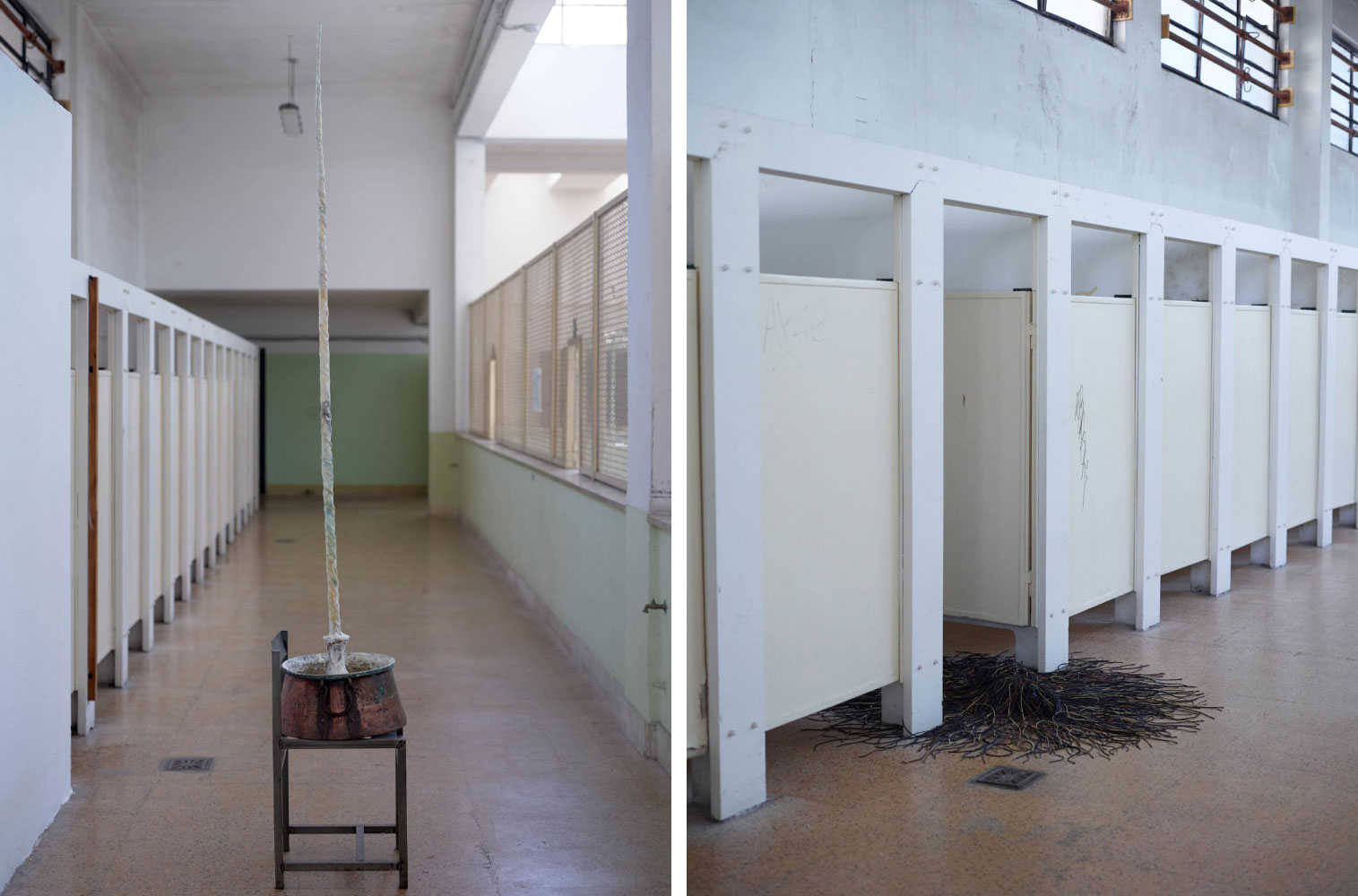
Right: Nari Ward, Offspring, 2013, copper basin, colored soap, human hair, bones, canvas, bamboo, glass carafe, 210 x 40 x 40 cm, © Nari Ward, Courtesy the artist and Galleria Continua

